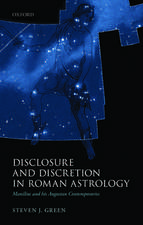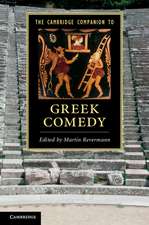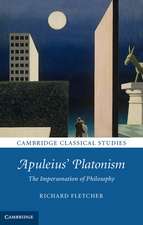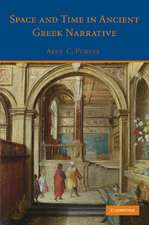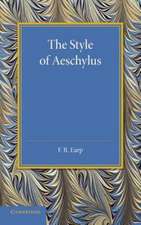Texts, Editors, and Readers: Methods and Problems in Latin Textual Criticism: Roman Literature and its Contexts
Autor Richard Tarranten Limba Engleză Paperback – 2 mar 2016
| Toate formatele și edițiile | Preț | Express |
|---|---|---|
| Paperback (1) | 197.73 lei 43-57 zile | |
| Cambridge University Press – 2 mar 2016 | 197.73 lei 43-57 zile | |
| Hardback (1) | 551.63 lei 43-57 zile | |
| Cambridge University Press – 2 mar 2016 | 551.63 lei 43-57 zile |
Din seria Roman Literature and its Contexts
-
 Preț: 284.13 lei
Preț: 284.13 lei -
 Preț: 253.96 lei
Preț: 253.96 lei -
 Preț: 278.74 lei
Preț: 278.74 lei -
 Preț: 278.41 lei
Preț: 278.41 lei -
 Preț: 339.81 lei
Preț: 339.81 lei -
 Preț: 257.94 lei
Preț: 257.94 lei -
 Preț: 327.83 lei
Preț: 327.83 lei -
 Preț: 245.02 lei
Preț: 245.02 lei -
 Preț: 258.32 lei
Preț: 258.32 lei -
 Preț: 245.94 lei
Preț: 245.94 lei -
 Preț: 364.10 lei
Preț: 364.10 lei -
 Preț: 282.98 lei
Preț: 282.98 lei - 11%
 Preț: 181.89 lei
Preț: 181.89 lei
Preț: 197.73 lei
Nou
Puncte Express: 297
Preț estimativ în valută:
37.83€ • 39.61$ • 31.31£
37.83€ • 39.61$ • 31.31£
Carte tipărită la comandă
Livrare economică 07-21 aprilie
Preluare comenzi: 021 569.72.76
Specificații
ISBN-13: 9780521158992
ISBN-10: 0521158990
Pagini: 206
Ilustrații: 5 b/w illus.
Dimensiuni: 127 x 196 x 13 mm
Greutate: 0.23 kg
Editura: Cambridge University Press
Colecția Cambridge University Press
Seria Roman Literature and its Contexts
Locul publicării:Cambridge, United Kingdom
ISBN-10: 0521158990
Pagini: 206
Ilustrații: 5 b/w illus.
Dimensiuni: 127 x 196 x 13 mm
Greutate: 0.23 kg
Editura: Cambridge University Press
Colecția Cambridge University Press
Seria Roman Literature and its Contexts
Locul publicării:Cambridge, United Kingdom
Cuprins
Introduction; 1. Textual criticism in a post-heroic age; 2. The rhetoric of textual criticism/textual criticism as rhetoric; 3. Establishing the text 1: recension; 4. Establishing the text 2: conjecture; 5. Establishing the text 3: interpolation, collaboration, and intertextuality; 6. Textual criticism and literary criticism: the case of Propertius; 7. Presenting the text: the critical edition and its discontents; 8. The future: problems and prospects; Appendix: reading a critical apparatus.
Recenzii
'… this is an excellent book both in itself and because it puts so many things into question. It paves the way for a huge improvement in the editing of classical texts.' Franz Dolveck, École française de Rome
Descriere
A critical reassessment of the methods of Latin textual criticism and editing, in a form accessible to non-specialists.



